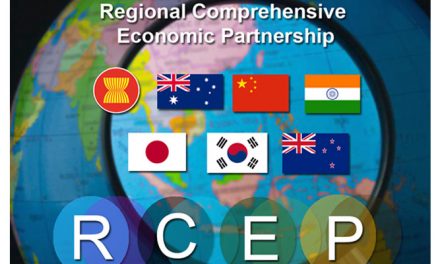Will the lowest Goods and Services Tax (GST) at 5 per cent be made applicable to all textile and clothing (T and C) items as proposed by the industry? This issue has gained utmost importance with the GST roll out expected in July next. In this regard the representation of the Southern India Mills Association (SIMA) and other trade associations needs to be seriously considered by the Union Finance Ministry so as to ensure that a predominantly labour – intensive sector that provides jobs to 105 mn people, especially for those below the poverty line and rural women, is not burdened by GST, adding to its costs. Moreover, as is known, over 80 per cent of the textile units are under the medium, small, micro enterprises (MSME) category. The lowest rate for the T and C Sector is also justified because clothing is a mass consumption item like food.
 Why a higher rate of 12 per cent be proposed to be levied on this sector, going by news doing its rounds in North Block in New Delhi, head-quarters of the Union Finance Ministry. GST Council has already finalised the rates at 5 per cent, 12 per cent, 18 per cent and 22 per cent. The entire cotton textile value chain has been enjoying zero per cent Central excise benefit under optional cenvat from 2004. Several States refund VAT in their new textile policies, while a few of them have reduced VAT from 5 per cent to two per cent or zero per cent. Viewed against this, a uniform levy of 5 per cent GST on all T and C items will bring in substantial revenue to the national exchequer. It will encourage voluntary compliance, minimise leakages through exemptions and unorganised sector and minimise adverse impact on prices. Besides, it will encourage growth of T and C industry, especially for new products using fibres – natural, manmade and new technologies.
Why a higher rate of 12 per cent be proposed to be levied on this sector, going by news doing its rounds in North Block in New Delhi, head-quarters of the Union Finance Ministry. GST Council has already finalised the rates at 5 per cent, 12 per cent, 18 per cent and 22 per cent. The entire cotton textile value chain has been enjoying zero per cent Central excise benefit under optional cenvat from 2004. Several States refund VAT in their new textile policies, while a few of them have reduced VAT from 5 per cent to two per cent or zero per cent. Viewed against this, a uniform levy of 5 per cent GST on all T and C items will bring in substantial revenue to the national exchequer. It will encourage voluntary compliance, minimise leakages through exemptions and unorganised sector and minimise adverse impact on prices. Besides, it will encourage growth of T and C industry, especially for new products using fibres – natural, manmade and new technologies.
SIMA wants the 5 per cent GST rate to be applied in a seamless manner with no differentiation in rate, starting from fibre – cotton / natural fibres man-made fibres or synthetic, yarn, fabric, madeups / apparel retail / trade. It also pleads for the same rate of tax for raw materials used in the MMF production to avoid embedded duty issue and price escalation due to loading of unavailed credit at MMF – stage. There will be supply chain neutrality as well as fibre neutrality, essential for the competitiveness of the sector.
At the same time, SIMA is against any GST exemption for any textile products. This means the 5 per cent GST needs to be applied on handloom as well as yarns, including hank yarn. If, however the GST council decides to exempt handloom as well as hank yarn under GST that will lead to a serious threat of compliance. Hank yarn should be treated at par with cone yarn and must maintain the same rate. SIMA opines if any exemption is considered, refund of tax paid on hank yarn at all stages of sale transaction may be routed through the National Handloom Development Corporation. The refund mechanism should be by way of the mechanism followed towards the Direct Benefit Transfer for transfer of differential cotton price to the cotton farmers bank account directly.
The Tamil Nadu State Government also needs to rethink on sorting out anomalies in respect of entry tax levied at one per cent of the cotton on sale or purchase of cotton (kapas, lint) and cotton waste in notified market area. The lavy may be subsumed for effective cost saving of the finished product (fabric / garment / made ups) reaching the public. Tamil Nadu accounts for just 4 per cent of the total cotton output as far as sourcing from other States is concerned.
The textile industry is a continuous process one. SIMA wants the tax paid on all types of fuels consumed be permitted to be availed of as credit. Nonpermission for utilisation of credit of tax paid on its purchase will become a cost to the commodity, which is one of the basic needs of the common man.
As I stated earlier, the textile and clothing sector had created jobs for 105.4 mn people as at the end of March 2011 (Provisional) going by the information provided by the Textile Commissioner, Mumbai. The employment number is projected to increase to 121.20 by the terminal year of the 12th plan (2017). This represents an increase of 15.81 mn jobs of the break-up of the projected figure of 121.20 mn jobs, the maximum number of 12.00 mn jobs is to be created in the ready-made garment sector (including knitwear sector), closely followed by the handicraft sector with 9.20 mn jobs and sericulture with 886 mn jobs. Included in the textile and clothing sector are the jute industry and allied sector such as cotton agriculture, cotton ginning/ pressing and cotton trade, jute agriculture and textile machinery industry and accessories.
According to provisional data, manmade fibre production increased by 3 per cent during April 2016 – January 2017. During the same period filament yarn production decreased by 2.2 per cent from 3,453 mn kg to 3377 mn kg in April – January 2017. Blended and hundred per cent non-cotton output rose by 6 per cent during the same period from 1,272 mn kg to 1350 mn kg. Cloth production in the mill sector declined by about one per cent from 1,931 mn sq.mtr to 1,905 mn sq.mtr. Cloth production in the decentralised sector remained constant. Total cloth output also remained constant during the same period.
The country’s total T and C exports declined by 3.63 per cent, from $7,924 mn in 2015-16 to $26,910 mn in 2016- 17. Export to the US decreased by 4 per cent during April – December 2016 over the corresponding period of preceding year. To conclude, even a 5 per cent GST on T and C items will bring in substantial revenue to the national exchequer. The finance Minister must therefore desist from planning a 12 per cent rate on these items which will discourage growth and blunt the industry’s competitive edge.

(P) – Provisional
Man-made fibre production increased by 3 per cent filament yarn production declined by 1 per cent during April-Jan. 2016-17
Cotton yarn production decreased by 2 per cent during April-Jan. 2016-17. Blended and 100 per cent non-cotton yarn production increased by about 6 per cent during the year April-Jan. 2016-17.
Cloth production by mill sector decreased by about 1 per cent during April-Jan. 2016-17. The Cloth production by decentralised sector remained constant during April-Jan. 2016-17 as compared to same period of the previous year. The Total cloth production during April-Jan. 2016-17 also remained constant compared to same period of the previous year.









